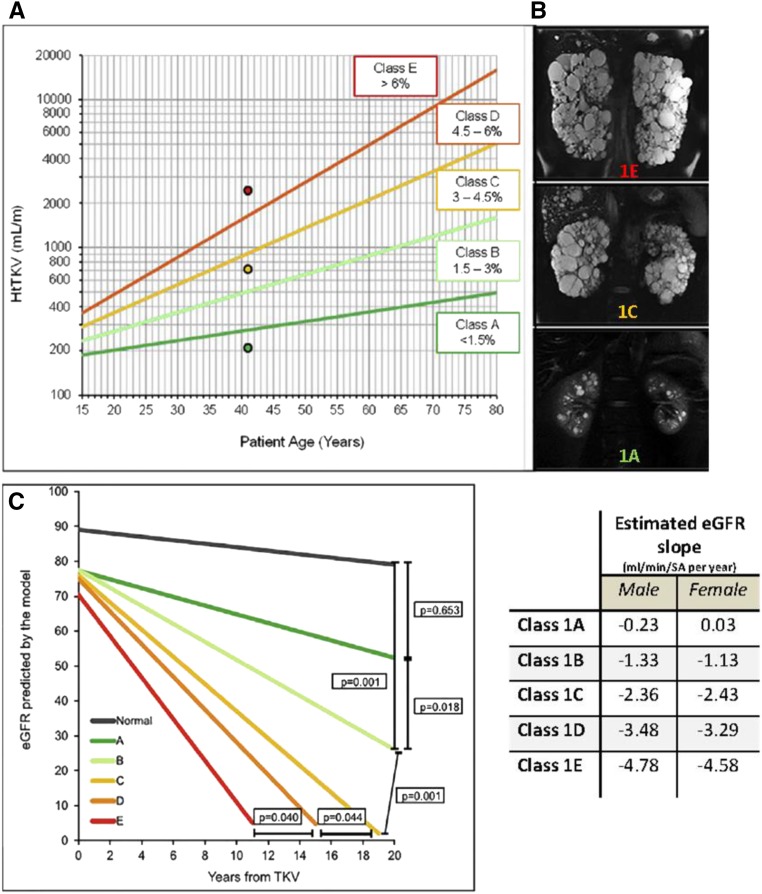Figure 3.
The Mayo imaging classification provides a simple tool for the identification of patients with rapidly progressive ADPKD. This imaging classification predicts the change in eGFR over time in patients with typical, bilateral, and diffuse distribution of cysts. (A) The A–E classification is on the basis of htTKV and age at the time of imaging, assuming kidney growth rates of <1.5%, 1.5%–3%, 3%–3.5%, 4.5%–6%, or >6% per year and a theoretical initial htTKV of 150 ml/m; the dots correspond to the patients in (B). (B) MRI studies corresponding to three 41-year-old patients in classes A (bottom), C (middle), and E (top). (C) eGFR slopes in cohort of 376 patients stratified by imaging class (−0.23, −1.33, −2.63, −3.48, and −4.78 ml/min per 1.73 m2 per year for classes A–E, respectively). Average eGFR at baseline (75 ml/min per 1.73 m2) and average age at baseline (44 years) for all patients were used for the model; values for normal slope were obtained from a population of healthy kidney donors; eGFR slopes were significantly different among the classes, and all but class A were significantly different from the control population of healthy kidney donors. The table shows the estimated eGFR slopes for each class by sex. Reprinted from reference 22, with permission.

